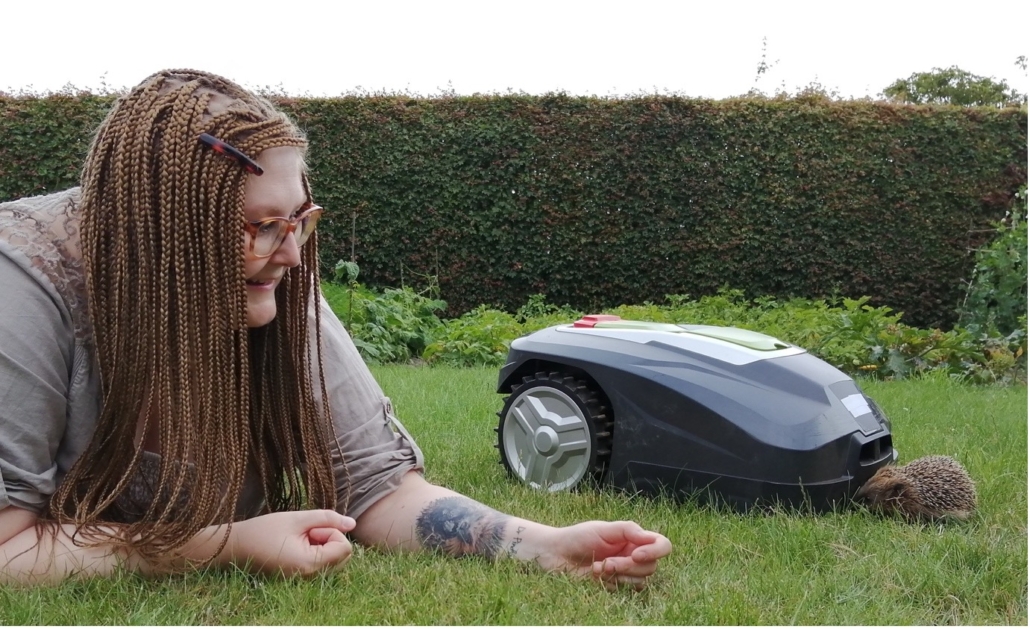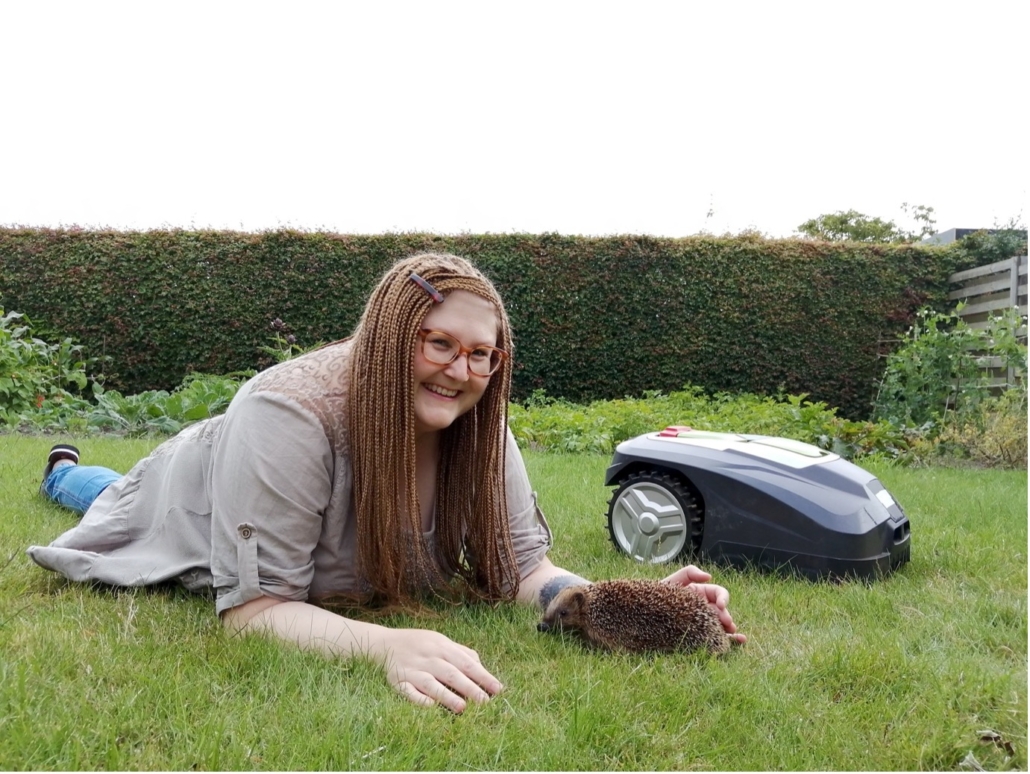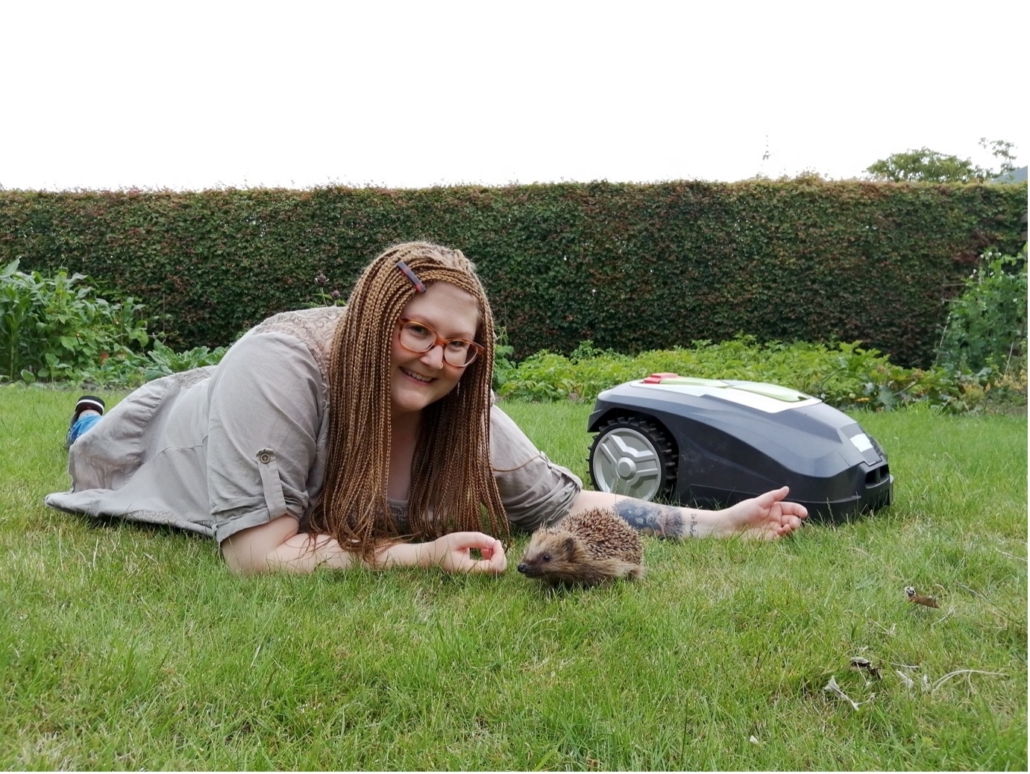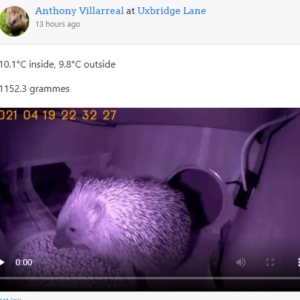New research: Product features of robotic lawn mowers determine danger to hedgehogs
Robotic lawn mowers running at night have, by some, been declared a great threat to the population of European hedgehogs. Now a recently published study conducted by Dr Sophie Lund Rasmussen, known as Dr Hedgehog, and colleagues from Oxford University and Aalborg University sheds new light on the topic. The study shows that different models of robotic lawn mowers vary substantially in their capability to detect and avoid hurting hedgehogs. In fact, certain technical features significantly improve the mowers’ safety index.
Every spring and summer, pictures of injured hedgehogs are circulated in the press and on social media, encouraging garden owners to stop using robotic lawn mowers in order to prevent causing such harm. But are robotic lawn mowers really to blame for the injuries?
To answer this question, Dr Rasmussen and her team of researchers thoroughly investigated 18 models of robotic lawn mowers in collision tests with dead hedgehogs. The dead hedgehogs in the study were collected from hedgehog rehabilitation centres, where sadly they had been too poorly to save. Each robotic lawn mower was tested 12 times; with four dead hedgehogs representing four different weight classes, each tested in three different positions.
“It is important to discover and document what is causing the horrific injuries we see inflicted on hedgehogs every year so that we can improve the conservation initiatives directed at this declining species. We already knew that garden strimmers and dog bites unfortunately are the causes of numerous injuries to hedgehogs, but we didn’t know if the robotic lawn mowers were also a problem,” explains Dr Rasmussen.
The results showed that some models of robotic lawn mowers caused extensive damage to the dead hedgehogs in the tests, but there were noteworthy differences in the degree of harm inflicted, with some machines consistently causing no damage.
“I was very surprised to discover how differently the robotic lawn mowers performed in our tests. It was devastating to witness how some models badly mutilated the dead hedgehogs. But at the same time, other models did quite well, and did not seem to harm the hedgehogs,” says Dr Rasmussen.
DETECTION OF HEDGEHOGS
The investigation showed that none of the models could detect the hedgehog cadavers until they bumped into them, and none of the robotic lawn mowers tested were able to detect the presence of dead, dependent juvenile hedgehogs (weighing less than 200 g).
“All robotic lawn mowers tested had to physically interact with the hedgehog to detect it. This was not the outcome I had hoped for, as the optimal scenario would be that the robotic lawn mower was able to detect the hedgehog in advance and change direction. At least some models did only lightly touch or push the dead hedgehog after which they changed direction. This could cause a minor bruising to the hedgehog in the worst case scenario but could perhaps also teach the hedgehog an important lesson on avoiding robotic lawn mowers in the future,” explains Dr Rasmussen.
HEDGEHOG FRIENDLY ROBOTIC LAWN MOWERS
Of the robotic lawn mowers tested in the study, technical features such as pivoting blades, skid plates and front wheel drive significantly increased the safety index of the machines, making the machines less harmful to hedgehogs.
A major step towards resolving the effect of robotic lawn mowers on hedgehog survival involves the design, and purchase, of hedgehog-friendly mowers: a topic of potentially fruitful collaboration between hedgehog conservationists and mower manufacturers.
“The important next step is to present the results and insights from the research to the manufacturers and encourage a collaboration with them to develop more hedgehog and wildlife friendly robotic lawn mowers. It is also my ambition to help the manufacturers develop a proper hedgehog crash test dummy and design a standardised test for robotic lawn mowers to enable labelling of hedgehog friendly models, helping the garden owner to make a wildlife friendly choice when purchasing such a product,” says Dr Rasmussen.
Fay Vass, Chief Executive of the British Hedgehog Preservation Society who is funding the study, says “This is important work that we are pleased to be able to support. We needed to find out for sure if these mowers were in fact harmful to hedgehogs. Hopefully now we have this information we can offer advice to industry on producing hedgehog safe mowers and to the public on how best to help hedgehogs when caring for the lawn. In the meantime, we would suggest people refrain from using these machines at night (from dusk to dawn) when they are more likely to encounter hedgehogs.”
GARDEN SAFETY
Hedgehogs are nocturnal but might occasionally be active during daytime for example if their nest has been disturbed, a mother hedgehog is collecting nesting materials or if they are poorly or injured and in urgent need of help. The present recommendations to increase the safety of hedgehogs in gardens with robotic lawn mowers are therefore to restrict the running of the machines to daylight hours and for garden owners to check for any active hedgehogs, or other potentially vulnerable wildlife such as leverets, amphibians or baby birds on the lawn before turning on the robotic lawn mower.
“Our research does not definitively answer the question of how dangerous these mowers are to live, wild hedgehogs – it shows that there is a potential risk – but so far we have not had the opportunity to test how living hedgehogs react towards an approaching robotic lawn mower. The majority may even run away and thereby avoid collisions. However, this needs to be investigated further,” explains Dr Rasmussen.
FACTS
The research project was performed in collaboration with Animal Protection Denmark and Pindsvine Plejerne and was funded by the British Hedgehog Preservation Society.
Dr Sophie Lund Rasmussen holds a PhD in biology and hedgehog ecology from University of Southern Denmark and Naturama. She continues her research on The Danish Hedgehog Project as a postdoctoral researcher at Aalborg University and WildCRU, Oxford University.
Photo credits: First photo: Dorthe Madsen, second-fourth photo: T. Pank.
Dr Sophie Lund Rasmussen with a hedgehog and a robotic lawn mower.
Disclaimer: The live hedgehogs did not take part in the tests and were only out during the day as they were at a rescue centre after having received care. They were released back into the wild the same evening.











